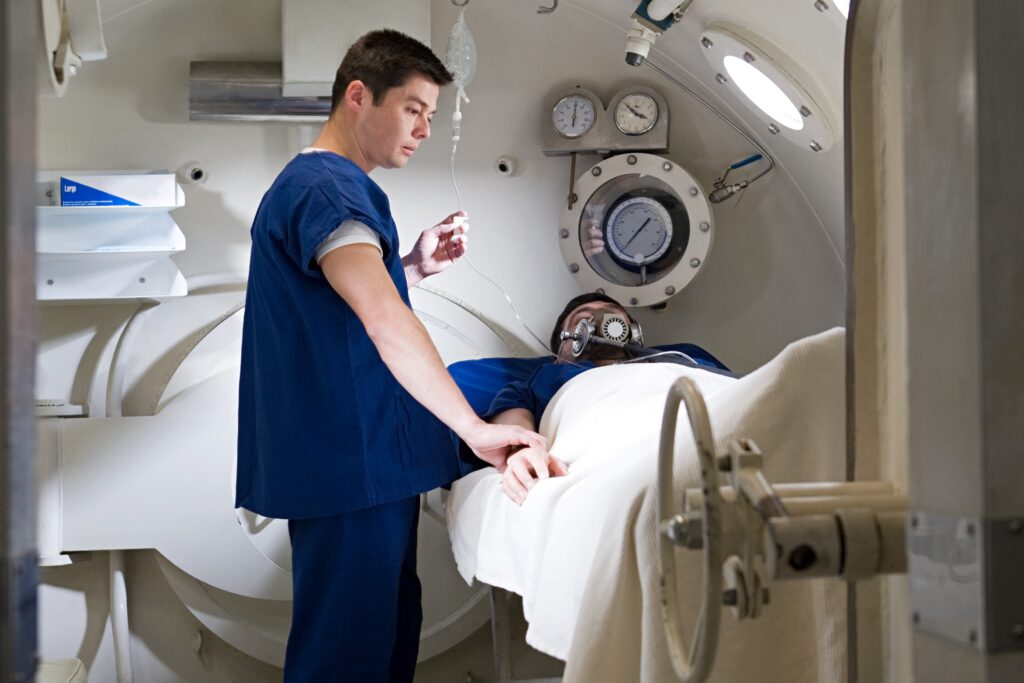What is a Air Compressor?

What is a Air Compressor? Diving beneath the ocean’s surface and exploring its hidden marvels is an exhilarating experience, the wonderment of which is enabled by the technologically advanced gear that divers wear. Among the critical components that ensure the safety and capability of these aquatic explorers is the air compressor—a fascinating piece of equipment […]
What is Decompression Sickness (DCS)?

What is Decompression Sickness (DCS)? Decompression sickness, commonly referred to as DCS or “the bends,” is a medical condition that occurs in scuba divers when they ascend too rapidly or fail to follow proper decompression procedures during their dive. The condition results from dissolved nitrogen gas leaving the body tissues and forming bubbles when the […]
What is Scuba Diving?

Scuba diving is a recreational and professional activity where individuals explore underwater environments using self-contained underwater breathing apparatus (SCUBA) equipment. This equipment allows divers to stay underwater for extended periods, enabling them to experience marine life, shipwrecks, caves, and other submerged wonders. The ability to explore these otherwise inaccessible areas has made scuba diving a popular pursuit for adventure enthusiasts, marine biologists, and professional divers alike. Since its modern development in the 20th century, scuba diving has attracted millions of people globally, offering a unique blend of excitement, discovery, and tranquility beneath the waves.
What is Absolute Pressure in Scuba Diving Context?

Absolute pressure, a term frequently used in the field of scuba diving, refers to the total static pressure at a particular point. It is a vital concept that divers need to understand and appreciate to ensure safety during their underwater adventures. In technical terms, absolute pressure is the sum of the atmospheric pressure and the pressure due to any fluid column above the point of measurement. It is always measured relative to a perfect vacuum, which is devoid of all matter and hence bears a pressure of zero.
What is Activated Carbon in Scuba Diving?

Activated carbon, also known as activated charcoal, is a form of carbon processed to have small, low-volume pores that increase the surface area available for adsorption or chemical reactions. Primarily known for its ability to filter and purify, activated carbon plays a crucial role in various industrial applications, from water treatment to air purification. In the context of scuba diving, this material is instrumental in ensuring that divers breathe clean, uncontaminated air. Its ability to adsorb toxic gases and impurities makes it an essential component in scuba tanks and rebreather systems.
What is Active Addition for Semi-Closed Circuit Rebreathers?

The active addition system is a key component of SCRs, controlling the feed gas’s addition to the breathing loop. The mechanism adds a specific quantity of gas regardless of the current loop volume, providing a constant supply of breathable gas while preventing hyperoxic or hypoxic conditions. At its core, the active addition system consists of a supply valve controlled by the diver or an electronic mechanism. When the diver inhales, the decrease in loop volume triggers the valve to release more gas into the loop. In electronically controlled systems, gas is added at fixed intervals, ensuring a continuous supply.
What is a Active Addition Semi-Closed Circuit Rebreather Systems?

Active Addition Semi-Closed Circuit Rebreather (AASCCR) systems represent a sophisticated evolution in scuba diving technology, combining the advantages of closed-circuit rebreathers with innovations that enhance safety and usability. These systems are designed to optimally recycle exhaled gases, thereby extending dive times, reducing gas consumption, and minimizing decompression obligations. By actively managing the gas mix in the breathing loop, AASCCR systems offer divers a unique balance between simplicity and efficiency, making them particularly valuable in extended or deep diving scenarios.
What is a Automatic Diluent Valve (ADV)?

The Automatic Diluent Valve (ADV) is a critical component in the configuration of modern rebreather systems used in scuba diving. This device automatically adds diluent gas to the breathing loop to maintain the correct volume and optimal gas mixture, ensuring the diver’s buoyancy and safety at varying depths. The importance of the ADV in facilitating longer, safer dives cannot be overstated, making it an essential study for divers and technicians alike.
What is Arterial Gas Embolism (AGE)?

Arterial Gas Embolism (AGE) is a potentially fatal complication that can occur during scuba diving, characterized by gas bubbles entering the arterial circulation. When these gas bubbles block blood vessels, particularly in the brain or heart, it can lead to immediate symptoms and rapid clinical deterioration.
What is Aggressive Decompression when Scuba Diving?

What is Aggressive Decompression when Scuba Diving? Aggressive decompression, a pivotal term within the realm of scuba diving, represents a decompression schedule intending to shorten overall decompression time for a given pre-ascent dive profile. This practice operates on a delicate balance, accepting the increased risk of decompression sickness to diminish overall ascent time, which can […]
